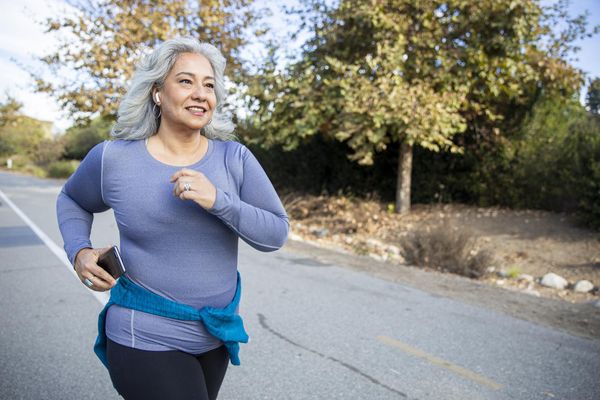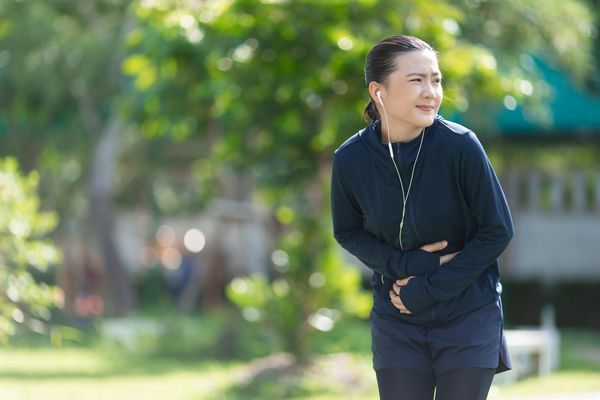When Carolyn Stafford's leg started hurting her, medical tests couldn't find a cause for the pain. Her doctor suggested that stress might be creating the problem.
At the time, Stafford was working a pressure-filled job in computer support. "I was constantly trying to solve people's problems," she says. "I had a lot of stress coming from that."
Since she enjoyed bicycling, Ms. Stafford decided to see if riding her bike to and from her job would help. She rode five miles each way. "It worked wonders. If it was a frustrating day, I'd get on that bike and I hammered coming home!" she says.
The effects of daily cycling were so beneficial for the Dallastown, PA, woman that when her employer temporarily moved the office nearly 10 miles from her home, she kept on riding. Her coworkers couldn't believe that Ms. Stafford, then in her early 50s, was going to continue the bike commute. She did—and when the office moved back to its original location, she adjusted her route so that she could still ride almost 10 miles each way. In winter, Ms. Stafford put studded snow tires on her bike and dressed in layers.
When she retired two-and-a-half years later, she continued her commitment to biking every day. She uses her bike instead of her car when she needs to travel into nearby York (eight miles from her home) for a haircut or a doctor's appointment or to go to the bank, post office or other errands.
Last year, Ms. Stafford rode 10,400 miles on her bicycle and drove her car a mere 3,000 miles. "I only use my car if I have to go someplace quickly, or if I'm taking people," she says.
Biking benefits
You don't have to log thousands of miles to gain rewards from riding your bike more and driving your car less. Regardless of whether you're on a fancy new two-wheeler or the battered old reliable you bought years ago, bike riding gives you a terrific workout with lots of interest and fun to keep you going. And with U.S. gasoline prices running higher than $3 per gallon, using a bicycle for shopping, commuting, visiting friends or just taking a joy ride may help your financial health at the same time it boosts your physical condition.
Bike riding lets you add a fitness activity into your day even when you think you don't have time for a workout. "You get the same cardiovascular benefits from cycling that you get from any other form of aerobic exercise—walking, jogging or dancing," says Lisa Callahan, MD, medical director of the Women's Sports Medical Center at the Hospital for Special Surgery in New York City. "It can be a very effective cardiovascular benefit."
Your muscles get a boost, too. Bike riding strengthens your thighs, hips and rear end. If your route includes climbing hills, your arms and upper body will benefit as you stand to pedal. What's more, cycling is gentle on your joints and helps preserve cartilage. That's especially advantageous for women who suffer from muscle strain, foot problems, knee troubles, back pain or impact-related injuries caused by running, jogging or walking, Dr. Callahan explains.
"If you're overweight and start an exercise program, sometimes it's harder on your joints because you are overweight," she adds. "So something like swimming or biking that's not pounding on the joints can be a good thing."
Daily routine biking also can help fight the incremental weight gain and waistline expansion that many women experience at midlife.
Dr. Callahan points out that cycling on stationary bikes indoors is generally a lighter workout than riding outside because there's no wind resistance or challenging terrain. "In the gym, you have to work a little harder to get the same result," she says.
Fit to ride
The health benefits of cycling will be as flat as a punctured tire if your bike doesn't fit your body correctly. Poor fit causes all sorts of problems, so it's important to have your bike correctly adjusted specifically for you. "You can't just go someplace and buy a bike because you like the color," says Dr. Callahan, who not only treats sports-related problems but enjoys cycling on weekends.
When your bike is too big for your body, you can develop neck and back problems. Seat height is another source of woes—if the seat is too low, it may stress your knee and cause knee cap pain; too high, it can also aggravate your knee.
For the right fit, position the seat so that when you pedal downward to the lowest point, your leg is almost straight. There should be a small bend in your knee of about 10 to 15 degrees.
To get a reliable fit, Dr. Callahan advises taking your bike to a bicycle shop and having them assess how well the frame height, seat and handlebars suit you. A few adjustments can make riding more comfortable and protect you from fit-related troubles.
Stayin' safe
While bicycle riding is both fun and great for your health, you need to take some wise precautions to make each ride as safe as possible. Although millions of us enjoy bike riding every day, it's an inescapable fact that bicyclist injuries and even deaths also occur. Annually, in the United States, more than 500,000 people suffer bicycle-related injuries severe enough to send them to hospital emergency rooms, and more than 700 die.
Before you hit the road (or trail), make sure you follow these safety tips:
- Wear a bicycle helmet on every ride, no matter how short. Head injuries are responsible for about 85 percent of biking-related deaths. Most state helmet laws apply only to children and adolescents, but more than 80 percent of bicyclists killed are aged 16 or older. Yet only 18 percent of adult cyclists in one study reported wearing helmets while riding. Staying away from cars won't protect you either: about 70 percent of bike injuries occur in situations that do not involve a motor vehicle.
- Be visible. Wear bright clothing when riding. Use a flag to maintain space between you and other vehicles. Travel in daylight when possible. If night riding is unavoidable, wear reflective clothing (found in bike shops) and use bicycle headlights and rear lights. For riding at any time, the National Safety Council advises equipping your bike with front, rear and spoke reflectors, pedal reflectors, a horn or bell and a rearview mirror.
- Choose your travel time carefully. When possible, avoid early morning and late afternoon rush hours. Bad weather also lowers visibility and negatively affects handling for both bikes and motor vehicles.
- Obey traffic rules. Bikes must follow the same road rules as other vehicles. Ride in the direction of traffic flow, use hand signals before turning, obey light signals (make a full stop at red lights and stop signs) and yield right-of-way. Ride single file. Keep to the far right of the road except when making a left-hand turn. Stay alert—watch for opening car doors, debris in the road and turning vehicles. Cross intersections carefully.
- Other safety tips: Wear shoes that protect your feet—not sandals. Carry repair gear and a cell phone to call for help if needed. Avoid riding on sidewalks because drivers can't see you coming at intersections. And don't drink alcohol if you'll be cycling, for the same reason you don't want to drink and drive a motor vehicle. Intoxication leads to serious and even fatal injuries.







